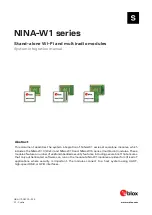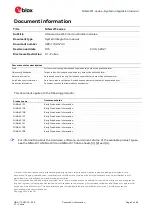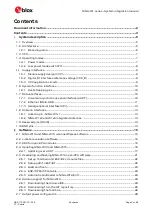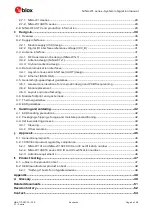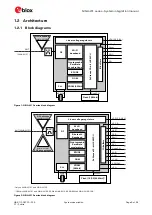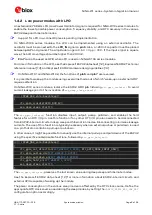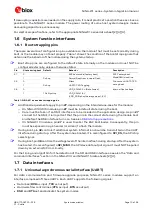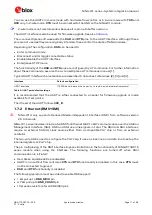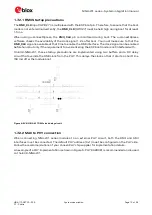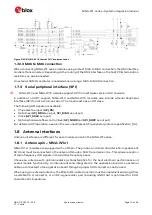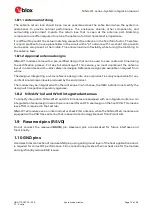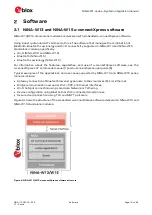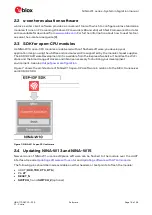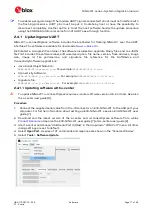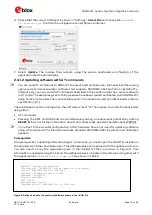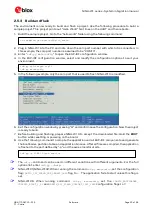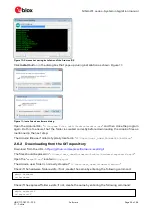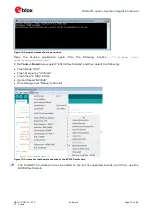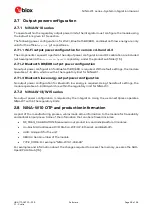
NINA-W1 series - System integration manual
UBX-17005730 - R15
System description
Page 14 of 54
C1 - Public
1.8.1.1
Antenna matching
The antenna return loss should be as low as possible across the entire band when the system is
operational to provide optimal performance. The enclosure, shields, other components, and
surrounding environment impacts the return loss that is seen at the antenna port. Matching
components are often required to retune the antenna to 50
Ω
characteristic impedance.
It is difficult to predict the actual matching values for the antenna in the final form factor. Therefore,
it is good practice to have a placeholder in the circuit with a “pi” network, with two shunt components
and a series component in the middle. This allows maximum flexibility while tuning the matching to
the antenna feed.
1.8.1.2
Approved antenna designs
NINA-W1 modules come with a pre-certified design that can be used to save costs and time during
the certification process. To take full advantage of this service, you must implement the antenna
layout in accordance with u-blox reference designs. Reference designs are available on request from
u-blox.
The designer integrating a u-blox reference design into an end-product is solely responsible for any
unintentional emission levels produced by the end product.
The module may be integrated with other antennas. In which case, the OEM installer must certify the
design with respective regulatory agencies.
1.8.2
NINA-W1x2 and W1x6 integrated antennas
To simplify integration, NINA-W1x2 and W1x6 modules are equipped with an integrated antenna. An
integrated antenna design means there is no need for an RF trace design on the host PCB. This means
less effort is required in the test lab.
NINA-W1x2 modules use an internal metal sheet PIFA antenna, while the NINA-W1x6 modules are
equipped with a PCB trace antenna that is based on technology licensed from Proant AB.
1.9
Reserved pins (RSVD)
Do not connect the reserved (
RSVD
) pin. Reserved pins are allocated for future interfaces and
functionality.
1.10
GND pins
Good electrical connection of module GND pins, using solid ground layer of the host application board,
is required for correct RF performance. Firm connections provide a thermal heat sink for the module
and significantly reduce EMC issues.

